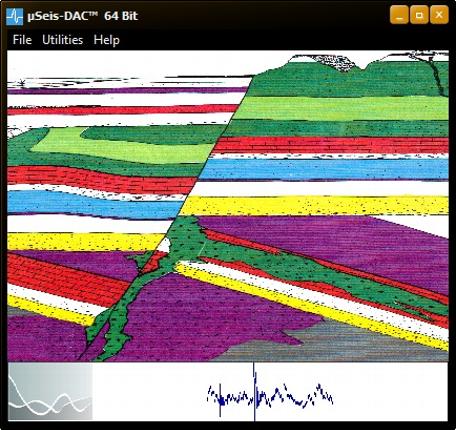μSEIS-DAC™
-
Configurable for either geophones or accelerometers.
-
Configurable for multi-channel Contact Triggers.
-
Configurable for multi-channel Digital Frequency Filter Triggers.
-
Configurable for multi-channel SEED™ Triggers.
-
Suitable for P-Wave and S-wave.
-
P-wave or S-wave short term average / long term average (STA/LTA) event detection.
-
Automated pre-trigger specification.
-
Ability to convert acquired PSM data in SEG-2 format.
-
Ability to convert acquired PSM data in BCE ASCII triaxial format.
-
Display of acquired seismic data with option of applying bandpass, high pass, low pass, and notch digital filters.

1. Baziw, E. and Verbeek, G. (2012), “Passive (Micro-) Seismic Event Detection by Identifying Embedded “event” Anomalies within Statistically Describable Background Noise”, to be published in journal of Pure appl. geophys.
2. Baziw, E., "Real-Time Seismic Signal Enhancement Utilizing a Hybrid Rao-Blackwellised Particle Filter and Hidden Markov Model Filter", IEEE Geosci. Remote Sensing Letters (GRSL), vol. 2, no. 4, pp. 418-422, Oct. 2005.
3. Baziw, E., Nedilko, B, and Weir-Jones, I., "Microseismic Event Detection Kalman Filter: Derivation of the Noise Covariance Matrix and Automated First Break Determination for Accurate Source Location Estimation" , Pure appl. geophys. Vol. 161, Number 2, 303-329. 2004.
4. Baziw, E., and Weir-Jones, I., "Application of Kalman Filtering Techniques for Microseismic Event Detection", Pure appl. geophys. Vol. 159, 449-471. 2002.
5. BCE technical note entitled “Passive (Micro-) Seismic Event Detection by identifying, quantifying and extracting frequency anomalies within statistically describable background noise”.
6. BCE technical note entitled “Relating Peak Particle Velocity and Acceleration to Moment Magnitude in Passive (Micro-) Seismic Monitoring”.
